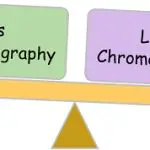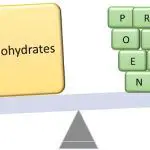The process of conversion of RNA (Ribonucleic acid) from the DNA (Deoxyribonucleic acid) template is known as Transcription. However, when the RNA (mRNA) template is converted into protein (amino acid sequence) it is known as translation. We can also say that transcription is the initial step of gene expression, which gives rise to the primary transcript in the form of mRNA … [Read more...] about Difference Between Transcription and Translation
Biochemistry
Difference Between A, B and Z DNA Double Helix Structure
The A and B forms of DNA are right-handed double helical structure, while Z form of DNA is left-handed double helical structure. The DNA molecule exists in different forms under the different condition in a cell, these variations in the conformations can be due to the salt concentrations, hydration level, DNA sequence, the presence of metal ions, direction of supercoiling, … [Read more...] about Difference Between A, B and Z DNA Double Helix Structure
Difference Between Gas and Liquid Chromatography
Both gas and liquid chromatography serve the same purpose, i.e., separating the components of any mixture. But they vary greatly if we talk about their working mechanisms, components used and the required conditions. Gas chromatography uses gas as its mobile phase for moving the particles of the sample inside the column. In contrast, in liquid chromatography, the mobile … [Read more...] about Difference Between Gas and Liquid Chromatography
Difference Between Carbohydrates and Protein
The carbohydrates act as fuel or a source of energy for the cells. The subsequent phases of carbohydrate metabolism generate energy molecules. Our bodies use this energy to conduct all mechanical, physical, and metabolic tasks. Whereas proteins facilitate a range of metabolic functions. For example: Constructing and maintaining a healthy body Catalyzing a variety of … [Read more...] about Difference Between Carbohydrates and Protein
Difference Between Vitamins and Minerals
An overall physical and psychological growth necessitates the right amount of nutrients in the form of a balanced diet. Similarly, vitamins and minerals also have their own significance in the existence of the living system. Vitamins on one side are the organic components that are manufactured within the living bodies of microorganisms, plants, and animals. Whereas minerals … [Read more...] about Difference Between Vitamins and Minerals





